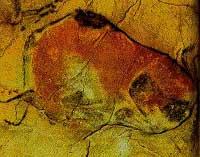Microorganisms rectors

Now, driven by the Austrian Science Foundation, Werner Luorano and his University of Vienna team are using genetic technology to detect and identify harmful microorganisms. Thanks to the new method of analysis, unknown microorganisms have been detected and the way to use adequate restoration methods to combat infestations has been found.
The murals attacked by microorganisms cushion the colors, raise the skin and appear spots. Despite using the electron microscope to search the person responsible for the damage, it was sometimes impossible to detect the culprit. With the slipping method, the DNA of microorganisms is detected in the poster samples. The only problem is that less than 0.1% of microorganisms are known. On the other hand, the use of the method requires very small samples, so the analysis is not performed by damaging the painting. In addition, unlike other methods, it is not necessary to wait for microorganisms to grow in the laboratory.
It is already in the 14th Herberstein Castle of Styria. Lubiza's method has been used in the murals of the twentieth century. Thanks to this they have been able to know what was the microorganism responsible for color loss and find the right solution. It is also believed to be useful for storing Altamira's paintings and other prehistoric caverns, where unexpected microorganisms have been detected.
Buletina
Bidali zure helbide elektronikoa eta jaso asteroko buletina zure sarrera-ontzian











